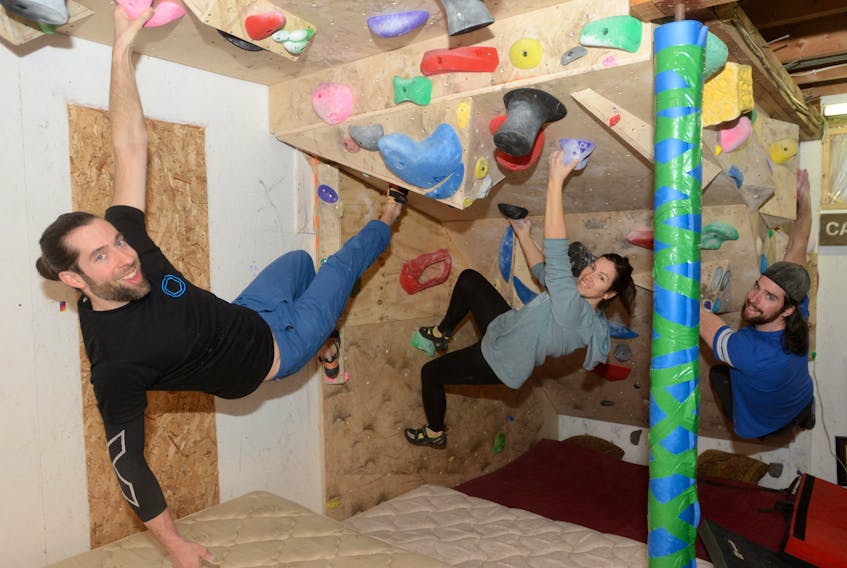CHARLOTTETOWN, P.E.I. — Few would expect a province like P.E.I. to be home to a group of dedicated rock climbers.
Apart from Stratford’s Red Rock Climbing Wall, there are not many places on the largely flat province for climbers to flex their muscles.
Instead, some climbers have taken it into their own hands to get their climbing fix, including building their own home structures.
“There are a lot more climbers on this little sandbar than people would imagine,” said Matt Martel, who has a small climbing gym, affectionately called the Callus Palace, inside his Charlottetown home. “We try to have a group gathering at least twice a month,”

Martel and three other P.E.I. climbers’ homemade setups are the focus of a newly-released short documentary by Island filmmaker Nathan Carter of Wrong Horse Productions.
The documentary, titled “Pulling Plastic”, was released on the Wrong Horse Productions Youtube channel Monday.
Martel’s structure was constructed in his basement in November 2017 with help from a carpenter friend.
What started as one main flat panel has since grown to include plenty of volumes (wooden triangular structures mounted to the plywood) and Canadian-made climbing holds.
He hopes to expand it even further.
“I hope it just keeps growing and growing,” Martel says in the documentary.
Carter, who worked at Red Rock Climbing Wall for several years, said he wanted to show some of the interesting setups Island climbers were building.
“I thought it would be really cool to show the great lengths these folks go to, to be able to climb,” said Carter.
Creating a home climbing gym involves plenty of passion.
Apart from the expense of the plywood, hardware and holds, which can cost thousands of dollars, it also takes time.
What may look to be a random rainbow assortment on the wall is actually a group of methodically-placed, colour-co-ordinated routes. Currently, there are about seven routes on Martel’s setup, although at one point there were 23.
While the sport is as physically demanding as a full-body workout, it is also mentally challenging.
Martel uses his wall two to three times a week, except for the summer or when injured.
Group events, which can see up to a dozen people in Martel’s basement, are also common and include members of the tight-knit climbing community cheering each other on.
“I love coming down and setting a route and seeing other people crack the code that I intended or be completely stumped by it,” says Martel in the documentary, adding that it’s the three-dimensional, physical, puzzle-solving aspect that keeps him climbing. “I think that constant problem-solving translates into my everyday life, into work and home life, and it just keeps you sharp.”
While Carter originally planned to create “Pulling Plastic” as a feature in his second season of his Interesting Islanders series, it bloomed into something bigger.
Carter said the climbing community in P.E.I., and Atlantic Canada as a whole, is a tight-knit group and one that he hopes to do more projects on in the future.
“This was a great experience to be able to show a little sandbar like P.E.I. has so many climbers, and I would love to work on something bigger to show the level of climbing in Atlantic Canada. There’s a hardcore community here of passionate climbers, and I think it’s a story that needs to be told.”
- Nathan Carter
“This was a great experience to be able to show a little sandbar like P.E.I. has so many climbers, and I would love to work on something bigger to show the level of climbing in Atlantic Canada,” said Carter. “There’s a hardcore community here of passionate climbers, and I think it’s a story that needs to be told.”









